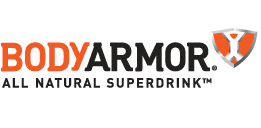 |
| Public Domain / Wikimedia Commons |
Playwright David Adjmi's off-Broadway play “3C”
has been accused of being nothing more than blatant copyright infringement by
DLT Entertainment, the company that owns the copyright to the popular 1970's
television series.
According
to a report in the New York Times, Adjmi received a
detailed cease-and-desist letter from DLT Entertainment's lawyers, accusing him of copyright infringement, and
listing numerous points of similarity between the play and the sitcom. A stage
adaptation of "Three's Company" is apparently in the works and DLT
alleges that Adjmi's play was damaging to it.
According
to the New York Times, Donald Taffner Jr., president of DLT Entertainment, said
the company was “very protective of the overall brand” because the show
continued to earn substantial revenues from syndication on TV Land and on home
video.
3C used a scenario similar to that of "Three's Company," but explored darker
implications of American culture in that period. The now-closed production
ran June 6-July 14 at the Rattlestick Playwrights Theater.
A
representative for the Dramatists Guild was quoted in Playbill.com as saying:
"the right of authors to make fair comment on pre-existing work
(whether through parody or other forms of fair use) is a First Amendment safety
valve in the copyright law, and one we wholeheartedly support, as do the
courts. If the author contacts us, we will discuss the issue with him and see how
we can help."
Adjmi's
plight apparently caught the attention of those within the New York theater community, who cited the
actions of DLT Entertainment as bullying (a common thread), stating that they believe that Adjmi's play clearly fell under the umbrella of parody — which is protected by the First Amendment.
Other
playwrights have explored similar territory, including Bert V. Royal's Dog
Sees God, which centers on the teen years of the Peanuts gang.
Tony
Award-nominated playwright Jon Robin Baitz penned
an open letter explaining why it was important that members of the New York theater community rally behind Adjmi's work and First Amendment rights,
calling 3C "clearly and patently and unremittingly parody."
Playbill notes that Rattlestick's
marketing materials never drew any direct links to 3C and
"Three's Company," describing the play as being "inspired by
1970's sitcoms, 1950's existentialist comedy, Chekhov, and disco anthems,"
adding that it was a "terrifying yet amusing look at a culture that likes
to amuse itself, even as it teeters on the brink of ruin."
"I
am not a lawyer, but David may need one, and I am currently investigating the
willingness of a respected First Amendment firm to take this case on
pro-bono," Baitz stated in his open letter.
"That an Off-Broadway
playwright should be bullied by a Wall Street law firm over a long-gone TV
show, is, in and of itself, worthy of parody, but in fact, this should be taken
seriously enough to merit raising our voices in support of Adjmi and his play,
which Kenyon & Kenyon is insisting be placed in a drawer and never
published or performed again. Whether one appreciates the work or not is
immaterial; the principle at stake here is a basic one. Specious and spurious
legal bullying of artists should be vigorously opposed, and that opposition
must begin first and foremost with all of us in the New York Theatre
community."
Among the notable individuals to add their names in support were Stephen Sondheim, Tony Kushner,
Andre Bishop, Joe Mantello, Terrence McNally, Kenneth Lonergan, John Guare, Terry Kinney,
Stephen Adley Guirgis and John Patrick Shanley.

























